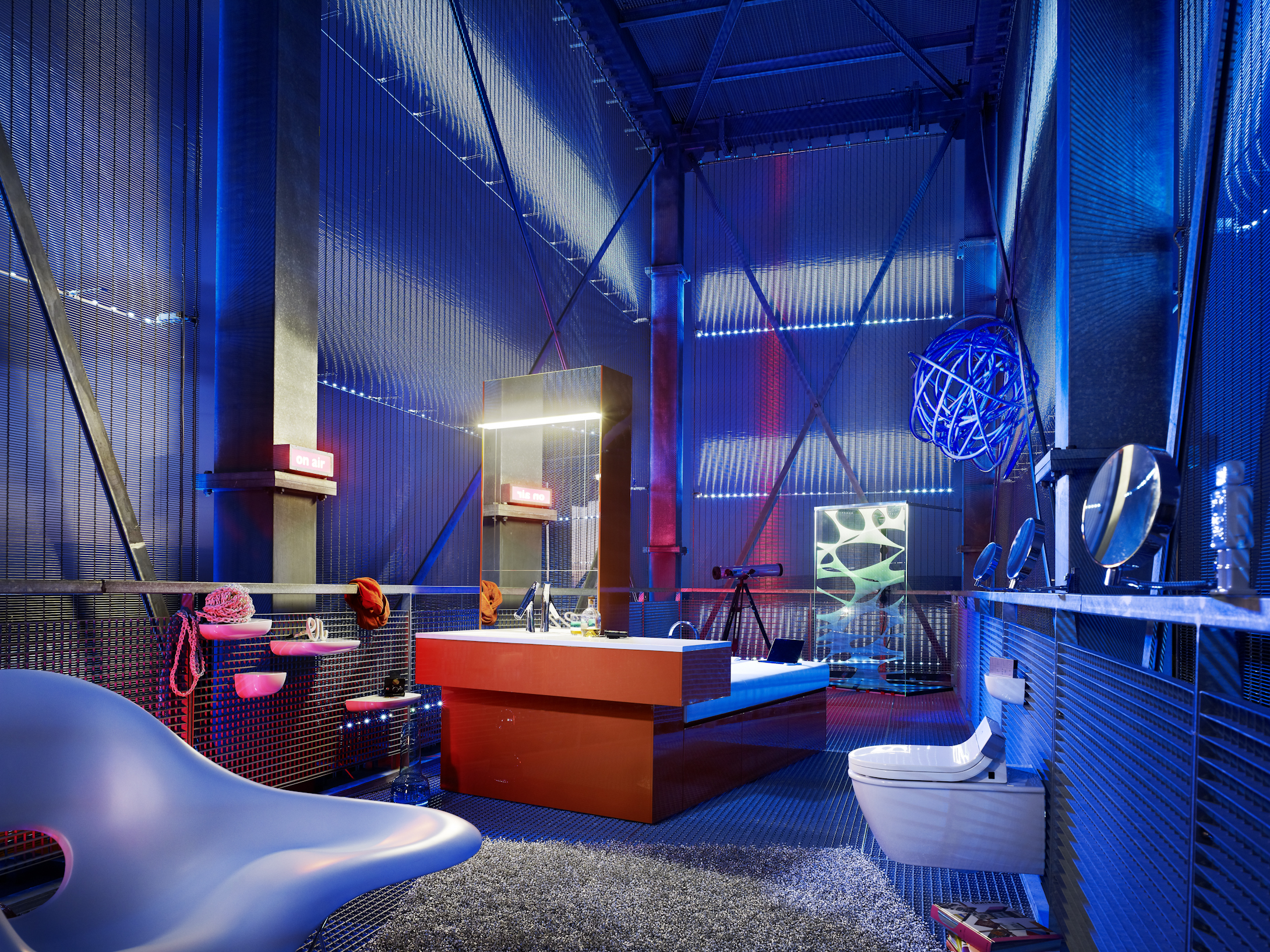The multi-function bathroom

The trend platform takes a look at both the needs bathroom users are already practising and those that are still unmet and uses them as the basis for developing different types of bathrooms that are intended to meet users’ future requirements. For the last four years, ‘Pop up my Bathroom’ has been accompanying the trends in bathroom design and investigating their potential for development on behalf of Messe Frankfurt and the German Sanitary Industry Association (Vereinigung Deutsche Sanitärwirtschaft / VDS).
The current trend report shows that users’ behaviour, expectations and wants can be allocated to certain patterns. This was the basis for the development of three types of bathroom: “Bathroom Bubble”, “Busy Bathroom” and “Bathroom (R)Evolution”. On the occasion of the upcoming ISH, The World’s Leading Trade Fair for The Bathroom Experience, Building Services, Energy, Air Conditioning Technology and Renewable Energies in Frankfurt am Main from 12 to 16 March 2013, the three bathroom types will be presented in lavish trend scenographies.
On the one hand, more than ever before, the bathroom is needed as a retreat for regeneration, exploring one’s sense of self and creative freedom. But the countermovement will also be playing a bigger role again in future: because of its intimate functions, some of which are perceived as shared rituals, the bathroom is being rediscovered as a family meeting point and social hotspot, where people feel up to the kind of intense encounters that many prefer to avoid in the mad rush of everyday life. Thirdly, society’s desire for security, individualisability, information and media availability is growing. The home, and particularly the bathroom, is turning into a cocoon that is just as tailored to the occupant’s needs as the ergonomically shaped bathtub.
Interpretation of consumer needs
The ‘Pop up my Bathroom’ trends are not furnishing trends in the usual, fashion-oriented sense; instead, they are the characterisation of a process. The three trends condense the long-term developments into a rough direction for future bathroom planning. The concept differentiates according to the functional focus of the bathroom and enquires into the consequences for the room type, furnishings, equipment, style and usage.
“When it came to analysing the needs it wasn’t so much about all the things people do in the bathroom today and how they style their bathroom as about what they could do there. Our aim is to encourage consumers to articulate what they want and encourage bathroom planners to propose some different solutions once in a while,” emphasises Jens Wischmann, managing director of the VDS.
Wischmann can also draw on the results of a survey conducted by the Gesellschaft für Konsumforschung GfK on behalf of the VDS, according to which the bathroom will become a more important or much more important area of the home for 16 percent of respondents – an increase in significance comparable only to that of the kitchen (15 percent) and living room (16 percent). A bathroom that permits unrestricted usage in old age (81 percent) and exudes a feel-good factor (76 percent) are particularly important aspects for people.
“Bathroom Bubble” – other-worldly, cosy, intimate
‘Bathroom Bubble’ describes a type of bathroom that is used as the final refuge in an everyday life dominated by a hectic pace and permanent availability. ‘Bathroom Bubble’ creates boundaries in an environment where the boundaries are becoming increasingly blurred. The bathroom doesn’t just provide seclusion but atmospheric density and cosy furnishings that convey a sense of security. Here, handling water – one of the four classical elements – takes on ritual value. Like an isolated bubble within an increasingly permeable living cocoon, the bathroom becomes a very private island – the perfect place to relax, think or be creative. Without further ado, ‘Bathroom Bubble’ declares the bathroom a protected area where a sense of freedom can unfold – comparable with experiencing nature or looking out over the roofs of the city.
‘Busy Bathroom’ – big, multifunctional, communicative
Intimacy and shared experiences don’t have to be mutually exclusive. The Busy Bathroom is the hotspot of a modern lifestyle and, with its concept, furnishings and equipment, caters to the long-suppressed need for communication in the bathroom.
Wherever bathing culture provides compensation for coldness and solitariness, or where, as in many other cultures, it takes on ritual forms, communication in the bathroom becomes an important aspect of both physical and emotional wellbeing. More than anything else, the Busy Bathroom is about creating possibilities for joint, barrier-free usage, communication, multi-functionality and wellbeing, thus allowing users to share more time and intimacy with family and friends. The increase in multimedia equipment and the digital networking of the bathroom will also cater to this communicative trend.
‘Bathroom (R)Evolution’ – ergonomic, digital and intuitive
The third ‘Pop up my Bathroom’ trend focuses on ergonomics in the bathroom and proposes scenarios that investigate the possibilities of using the bathroom as an interface between its human users and the technology. In ‘Bathroom (R)Evolution’, the concept of a barrier-free bathroom relates to the unhindered accessibility and ergonomic usability of both the individual elements and their technical interfaces – united within one and the same product and adapted to an entire room.
Hands-free fittings, individualisable shower programmes, programmable air conditioning and lighting systems, creative features like LED effects, multimedia equipment and app-compatible information platforms – all these means of tuning the bathroom are already available today. Once they become established, anyone in search of a high degree of safety, comfort, convenience and individualisation will be able to transform the bathroom into a feel-good machine that allows him to keep a firm hold on the reins.
